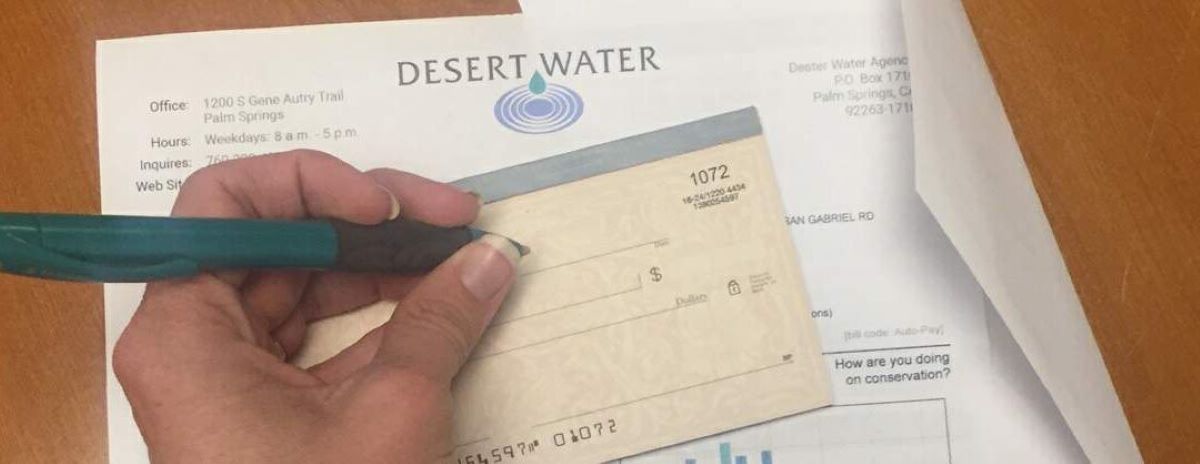Home>Finance>How Much It Cost To See A Podiatrist Without Insurance


Finance
How Much It Cost To See A Podiatrist Without Insurance
Published: November 13, 2023
Find out the cost of seeing a podiatrist without insurance and explore finance options. Take care of your foot health without breaking the bank.
(Many of the links in this article redirect to a specific reviewed product. Your purchase of these products through affiliate links helps to generate commission for LiveWell, at no extra cost. Learn more)
Table of Contents
Introduction
When it comes to taking care of our health, we often prioritize major organs like the heart and lungs. However, we must not neglect our feet, as they play a crucial role in our daily activities. When experiencing foot pain or discomfort, it is essential to seek professional help from a podiatrist.
A podiatrist is a medical specialist who focuses on the diagnosis, prevention, and treatment of foot and ankle conditions. They are highly trained professionals who can address a wide range of foot-related ailments, including sports injuries, bunions, plantar fasciitis, ingrown toenails, and more.
Unfortunately, many individuals do not have health insurance coverage, making it challenging to access affordable podiatrist services. In such cases, it is vital to understand the options available for seeing a podiatrist without insurance and the potential costs involved.
In this article, we will discuss the importance of seeing a podiatrist, explore the options for receiving treatment without insurance, break down the potential costs of podiatrist visits, and provide tips on saving money in the process. Whether you are uninsured or simply seeking cost-effective solutions, this guide will help you navigate the world of podiatry care.
What Does a Podiatrist Do?
A podiatrist is a specialized medical professional who focuses on diagnosing, treating, and preventing conditions related to the feet and ankles. They undergo extensive training and education to ensure they have the expertise to address a wide range of foot and ankle problems.
Podiatrists are skilled in providing both nonsurgical and surgical treatments for various foot conditions. They can diagnose and treat common issues such as bunions, corns, calluses, ingrown toenails, and fungal infections. They also have the knowledge and skills to address more complex foot and ankle disorders, including sports injuries, fractures, heel pain, and diabetic foot complications.
Some of the specific services that a podiatrist provides include:
- Performing physical examinations and medical assessments of the feet and ankles
- Prescribing medications and orthotics to alleviate pain and manage foot conditions
- Performing surgical procedures, such as bunionectomy, hammertoe correction, and joint reconstruction
- Treating sports-related injuries, including sprains, fractures, and stress fractures
- Providing diabetic foot care to prevent complications, such as ulcers and infections
- Managing chronic conditions like plantar fasciitis, Achilles tendonitis, and arthritis
- Offering preventive care, including routine foot care, gait analysis, and footwear recommendations
It is important to note that podiatrists work closely with other healthcare professionals, such as orthopedic surgeons, physical therapists, and primary care physicians. They collaborate to provide comprehensive care and ensure the best outcomes for their patients.
By seeking the expertise of a podiatrist, individuals can receive specialized treatment that targets the root cause of their foot or ankle condition. Whether it’s a minor issue or a more complex problem, a podiatrist can provide personalized care and guidance to improve mobility, alleviate pain, and enhance overall foot health.
The Importance of Seeing a Podiatrist
Many people underestimate the importance of taking care of their feet and often neglect to seek professional help when experiencing foot pain or discomfort. However, seeing a podiatrist can have numerous benefits for both immediate relief and long-term foot health.
Early detection and treatment: Podiatrists are experts in identifying potential foot problems and diagnosing underlying conditions. By seeking their expertise, you can catch any issues early on, preventing them from worsening and potentially causing more significant problems in the future. This early intervention can help minimize pain, discomfort, and the need for more invasive procedures.
Proper diagnosis and treatment: As medical professionals specialized in foot and ankle conditions, podiatrists have in-depth knowledge and experience in diagnosing various foot problems. They can accurately assess your symptoms, conduct necessary tests, and provide a tailored treatment plan that suits your specific needs. This personalized approach ensures that you receive the most effective treatment and achieve optimal results.
Prevention and education: Podiatrists not only treat existing foot problems but also educate patients on how to prevent future issues. They can offer advice on proper footwear, foot care techniques, exercises, and lifestyle modifications to maintain healthy feet. Their guidance can reduce the risk of developing common foot conditions and help you make informed choices about your foot health.
Improved mobility and quality of life: Foot pain and discomfort can significantly impact your ability to move and perform daily activities. By addressing foot problems with the help of a podiatrist, you can regain mobility, alleviate pain, and enhance your overall quality of life. Whether it’s walking, running, or participating in sports, taking care of your feet ensures that you can engage in activities without limitations.
Specialized expertise: While general practitioners can provide basic foot care, podiatrists offer specialized expertise in foot and ankle health. They are up to date with the latest advancements in podiatric medicine and have a deep understanding of the complexities of foot conditions. When you see a podiatrist, you can trust that you are receiving care from someone with in-depth knowledge in the field.
Whether you are experiencing acute foot pain or simply want to ensure the ongoing health of your feet, consulting a podiatrist is crucial. They play a pivotal role in diagnosing, treating, and preventing foot conditions, allowing you to maintain optimal foot health and lead a pain-free and active lifestyle.
Options for Seeing a Podiatrist Without Insurance
While having health insurance can provide financial coverage for medical expenses, many individuals find themselves without insurance coverage for various reasons. However, not having insurance does not mean you have to forgo necessary medical care, including seeing a podiatrist. Here are some options to consider when seeking podiatry services without insurance:
Community Health Centers: Community health centers are nonprofit organizations that provide affordable healthcare services, including podiatry care, to individuals who are uninsured or underinsured. These centers offer sliding fee scales based on income, making quality foot care accessible to those in need. Contact your local community health center to inquire about their podiatry services and payment options.
Free Clinics: Some areas have free clinics that offer medical services, including podiatry care, to individuals who cannot afford traditional healthcare. These clinics may have volunteer podiatrists who provide basic foot care and treatment for certain foot conditions. While these clinics may have limited availability and longer wait times, they can be a valuable resource for those without insurance coverage.
Medical Schools and Teaching Hospitals: Medical schools and teaching hospitals often have clinics that offer reduced-cost or free services to patients. Podiatrists in training, under the supervision of experienced professionals, provide care in these clinics. While it may take longer to receive treatment and appointments may be limited, this option can be an affordable solution for individuals seeking podiatry services without insurance.
Charitable Organizations: Some charitable organizations and foundations provide financial assistance or connect individuals without insurance to affordable healthcare services, including podiatry care. These organizations may have programs or resources specifically designed to help people access necessary medical treatments. Research local charitable organizations in your area or reach out to national organizations to inquire about their assistance programs.
Payment Plans and Negotiations: When visiting a private podiatry practice, inquire about the possibility of setting up a payment plan or negotiate a reduced fee for services. Many healthcare providers understand the financial constraints their patients may face and are willing to work out a reasonable payment arrangement. It is always worth discussing your situation and exploring options for affordable payment with the podiatrist’s office.
Though not having insurance can pose challenges, there are avenues available to access podiatry care without breaking the bank. Explore these options and reach out to local resources to find the solution that best fits your needs and financial situation.
Cost Breakdown of Podiatrist Visits Without Insurance
When seeking podiatry care without insurance, it’s important to understand the potential costs involved. While the exact cost of each visit can vary depending on factors such as the location, complexity of the condition, and specific treatments required, here is a general breakdown of the costs you can expect:
Initial Consultation: The first visit to a podiatrist typically involves a comprehensive examination and assessment of your foot condition. This initial consultation can range from $100 to $250 or more, depending on the specific circumstances. Additional tests or diagnostic imaging, such as X-rays, may incur extra charges.
Treatment and Procedures: The cost of treatments and procedures will depend on the nature of your foot condition. Minor procedures, such as toenail trimming or corn removal, may cost around $50 to $100 per session. More complex procedures, such as ingrown toenail surgery or bunionectomy, can range from $200 to $500 or more. Surgical procedures typically have higher costs due to the use of operating rooms, anesthesia, and post-operative care.
Orthotics and Medical Equipment: If custom orthotics or medical equipment, such as braces or splints, are recommended for your condition, you should budget for additional expenses. The cost of orthotics can range from $200 to $800, depending on the type and complexity. It’s important to note that these devices are often designed to last for an extended period and can provide long-term benefits.
Follow-up Visits: Depending on your specific condition and treatment plan, you may require regular follow-up visits to monitor your progress and adjust your treatment if necessary. Follow-up visits typically cost less than the initial consultation and can range from $50 to $150 per session.
Prescription Medications: If a podiatrist prescribes medications to manage your foot condition, there will be additional costs for purchasing the prescribed drugs. The cost of medications can vary widely depending on the type and dosage prescribed. It’s helpful to discuss options with your podiatrist to find affordable alternatives or explore any available patient assistance programs.
It’s important to communicate openly with your podiatrist about your financial circumstances and discuss potential cost-saving options. Some podiatrists may offer discounted rates for uninsured patients or have payment plans available to help manage the cost of care. Exploring these options can help make podiatry services more affordable and accessible.
Remember to inquire about all potential costs upfront and request a breakdown of fees for each service or procedure. This will allow you to budget accordingly and make informed decisions about your foot health.
Ways to Save Money on Podiatrist Visits Without Insurance
While the cost of podiatrist visits without insurance can be a concern, there are several strategies you can employ to save money and make your foot care more affordable. Here are some ways to help minimize costs:
Research Affordable Providers: Take the time to research and compare the prices of different podiatry practices in your area. Look for clinics or practitioners that offer competitive rates or have a reputation for providing affordable care. This can help you find a provider that fits within your budget without compromising on quality.
Ask About Self-Pay Discounts: Some podiatrists offer discounted rates for patients who do not have insurance coverage. When scheduling your appointment, ask the office if they have any self-pay discounts or reduced fee structures specifically for uninsured individuals. Taking advantage of these discounts can significantly lower your out-of-pocket costs.
Seek Out Free or Low-Cost Clinics: Look for free or low-cost clinics in your area that offer podiatry services. These clinics, often run by nonprofit organizations, provide medical care at reduced or no cost to individuals in need. While there may be eligibility requirements or longer wait times, these clinics can be an invaluable resource for accessing affordable podiatry care.
Explore Government Assistance Programs: Depending on your income level and specific circumstances, you may be eligible for government assistance programs that provide healthcare coverage or financial assistance for medical expenses. Research programs such as Medicaid, Medicare, or state-specific assistance programs to determine if you qualify for any support.
Inquire About Payment Plans: If faced with a large bill for a procedure or treatment, inquire if the podiatrist’s office offers payment plans. Establishing a payment plan allows you to spread out the cost over time, making it more manageable for your budget. Be sure to discuss the terms and any associated fees or interest rates before committing to a payment plan.
Consider Generics or Over-the-Counter Options: When prescribed medications, ask your podiatrist if there are any generic alternatives available, as they tend to be more cost-effective. Additionally, inquire about over-the-counter options for minor foot conditions that may alleviate symptoms without the need for a prescription. This can help you save on medication costs.
Practice Preventive Foot Care: One of the most effective ways to reduce podiatry costs is by practicing preventive foot care. This includes maintaining good foot hygiene, wearing appropriate footwear, and avoiding activities that may lead to foot injuries. By taking care of your feet and addressing minor issues early on, you can potentially avoid more costly treatments or surgeries in the future.
Consider Health Savings Accounts: If you have a health savings account (HSA) or a flexible spending account (FSA), you can use the funds allocated to these accounts to cover your podiatry expenses. These accounts allow you to set aside pre-tax dollars specifically for medical expenses, including podiatrist visits, treatments, and medications.
Don’t hesitate to discuss your financial situation and concerns with your podiatrist. They may have recommendations or resources to help you manage costs or connect you with additional assistance programs. Remember that taking care of your foot health is essential, and with some proactive measures, you can make podiatry care more affordable and accessible.
Conclusion
Taking care of your feet is crucial for overall health and well-being, but it can be challenging to access podiatry care without insurance. However, there are options available that can help make seeing a podiatrist more affordable and manageable.
Whether through community health centers, free clinics, or charitable organizations, there are resources specifically designed to provide podiatry services to individuals without insurance coverage. Additionally, negotiating payment plans or seeking out self-pay discounts can help lower the cost of visits to private practices.
When managing the cost of podiatry care, it’s essential to research affordable providers, inquire about discounts, and explore government assistance programs. Preventive foot care and utilizing health savings accounts can also contribute to cost savings in the long run.
While financial considerations are important, it’s crucial to prioritize your foot health and seek professional care when needed. The expertise of a podiatrist can help with the early detection, proper diagnosis, and effective treatment of foot conditions, contributing to improved mobility and overall quality of life.
Remember, communication is key. Discuss your financial concerns openly with your podiatrist, as they may have suggestions or resources to help make your care more affordable. By exploring available options and being proactive in managing your foot health, you can receive the necessary podiatry care without insurance coverage.
Ultimately, investing in your foot health is an investment in your overall well-being. By prioritizing your feet and seeking affordable ways to access podiatry care, you can ensure your feet are in good hands and continue to support you on your daily journey.














